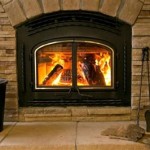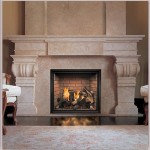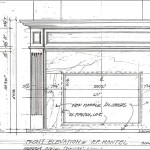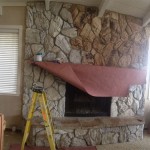Hotel Rooms With Fireplaces: A Guide to Cozy Getaways
The ambiance of a crackling fire has long been associated with comfort, relaxation, and romance. For travelers seeking an enhanced lodging experience, hotel rooms with fireplaces offer a unique appeal, transforming a standard stay into a memorable retreat. This article explores the various aspects of fireplace-equipped hotel rooms, examining their benefits, types, regional variations, and considerations when booking.
The Allure of Fireplace Hotel Rooms
Fireplaces introduce a distinct element of luxury and warmth to a hotel room. Beyond simply providing heat, they create a focal point that encourages relaxation and conversation. Guests can envision themselves unwinding after a long day of travel or enjoying a quiet evening with a good book by the fire. This ambiance is particularly attractive during colder months, offering a respite from the elements and a cozy environment to which to return. Furthermore, the visual element of a fire enhances the aesthetic, adding a touch of sophistication and elegance to the room’s decor. The crackling sound, the flickering light, and the radiant warmth contribute to a sensory experience that is often absent in standard hotel accommodations.
The appeal also lies in the sense of nostalgia and familiarity that a fireplace evokes. For many, it harkens back to childhood memories of family gatherings or cozy winter evenings spent at home. Replicating this feeling in a hotel setting allows guests to reconnect with those positive emotions and create new memorable experiences. This nostalgic connection can be a powerful draw, influencing booking decisions and fostering a greater sense of satisfaction with the overall hotel stay.
From a practical standpoint, a fireplace can also supplement the heating system, allowing guests to personalize their comfort level. While central heating systems often regulate temperature across an entire hotel, a fireplace offers a more localized and controllable source of warmth. This is particularly beneficial for individuals who prefer a warmer environment or those who are sensitive to fluctuations in temperature.
Types of Fireplaces Found in Hotel Rooms
The specific type of fireplace found in a hotel room significantly impacts the overall experience. While traditional wood-burning fireplaces are still present in some establishments, gas fireplaces and electric fireplaces are more common due to ease of use, safety concerns, and environmental considerations.
Wood-Burning Fireplaces: These offer the most authentic experience, requiring guests to manually build and maintain the fire. Hotels with wood-burning fireplaces typically provide firewood and instructions, but using them requires more effort and awareness than other types. They also necessitate proper ventilation and regular cleaning to ensure safety and prevent the buildup of creosote, a flammable substance. Due to these factors, wood-burning fireplaces are becoming less prevalent in hotel settings, particularly in urban areas where air quality regulations are stricter.
Gas Fireplaces: Gas fireplaces offer a convenient and relatively low-maintenance alternative to wood-burning fireplaces. They are typically operated with a switch or remote control, allowing guests to easily turn the fire on and off as needed. They produce real flames and radiant heat, replicating the look and feel of a traditional fireplace without the mess or effort. Gas fireplaces are also generally considered safer than wood-burning fireplaces, as they eliminate the risk of flying embers and reduce the potential for carbon monoxide buildup. However, it's crucial that hotels regularly inspect and maintain gas fireplaces to ensure that they are functioning safely and efficiently.
Electric Fireplaces: Electric fireplaces are the most common type found in modern hotels. They are essentially electric heaters that simulate the appearance of a fire using lights and projections. They offer several advantages, including ease of installation, low maintenance, and precise temperature control. Electric fireplaces are also the safest option, as they do not produce real flames or emit any harmful gases. While they do not provide the same level of ambiance as wood-burning or gas fireplaces, they are an efficient and cost-effective way to add a touch of warmth and visual appeal to a hotel room. High-end electric fireplaces are now capable of mimicking a realistic flame pattern, enhancing their aesthetic appeal.
In addition to these primary types, some hotels may feature unique fireplace designs that blend traditional elements with modern technology. For example, a hotel might incorporate a bioethanol fireplace, which burns liquid fuel made from renewable resources and produces a clean, smokeless flame. Regardless of the specific type, it's important for hotels to clearly communicate to guests how to operate the fireplace safely and effectively.
Regional Variations and Thematic Designs
The availability and style of hotel rooms with fireplaces often vary depending on the geographic location and the overall theming of the establishment. Mountain resorts, ski lodges, and rural retreats are more likely to offer fireplace-equipped rooms, capitalizing on the natural setting and the desire for a cozy, rustic ambiance. Coastal hotels and urban boutique hotels may also feature fireplaces, but these are often designed to complement the specific aesthetic of the property.
In mountainous regions, stone fireplaces are a common feature, often constructed with locally sourced materials. These fireplaces contribute to a rugged and natural atmosphere, seamlessly blending with the surrounding landscape. Ski resorts may offer rooms with large, open fireplaces designed to accommodate multiple guests, creating a communal space for relaxation and socializing after a day on the slopes. The focus is on creating a warm and inviting environment that encourages guests to unwind and share their experiences.
Coastal hotels, on the other hand, may opt for more modern and streamlined fireplace designs. Gas fireplaces with sleek metal or glass surrounds are often favored, reflecting a contemporary aesthetic that complements the coastal setting. These fireplaces often incorporate nautical elements, such as driftwood accents or sea-inspired color palettes. The goal is to create a sense of calm and tranquility, allowing guests to relax and enjoy the ocean views from the comfort of their room.
Boutique hotels often take a more creative and artistic approach to fireplace design. They may incorporate vintage fireplaces salvaged from historic buildings or commission custom-designed fireplaces that reflect the unique character of the hotel. These fireplaces often serve as a focal point in the room, adding a touch of personality and sophistication. The emphasis is on creating a memorable and Instagram-worthy experience for guests.
The size and placement of the fireplace also vary depending on the room's layout and design. Some rooms may feature a small, intimate fireplace nestled in a corner, while others may have a large, statement-making fireplace that dominates the entire wall. The positioning of the fireplace is carefully considered to maximize its impact on the room's ambiance and functionality.
Considerations When Booking a Hotel Room With a Fireplace
When booking a hotel room with a fireplace, it's essential to consider several factors to ensure that the room meets individual needs and expectations. First, it's crucial to verify the type of fireplace offered, as this will impact the level of effort required to operate it and the overall ambiance. Guests should inquire whether the fireplace is wood-burning, gas, or electric and understand the specific instructions for using it safely and effectively.
Second, it's important to inquire about any additional fees associated with using the fireplace. Some hotels may charge for firewood or gas, while others may include these amenities in the room rate. It's also wise to check for any restrictions on fireplace usage, such as time limits or temperature controls. Understanding these details in advance can prevent any surprises or disappointments during the stay.
Third, prospective guests should consider the location of the fireplace within the room and its proximity to other amenities. Ideally, the fireplace should be situated in a comfortable seating area, allowing guests to relax and enjoy the warmth and ambiance. It's also helpful to check whether the fireplace is visible from the bed or other areas of the room, as this can enhance the overall experience.
Safety considerations are paramount when booking a hotel room with a fireplace. Guests should ensure that the fireplace is properly maintained and that all safety features are in working order. It's also important to familiarize oneself with the hotel's fire safety procedures and to know the location of fire extinguishers and emergency exits. When using the fireplace, guests should always follow the hotel's instructions and exercise caution to prevent accidents or injuries.
Finally, reading reviews from previous guests can provide valuable insights into the quality of the fireplace experience. Reviews often highlight specific aspects of the fireplace, such as its ease of use, its heating capabilities, and its overall contribution to the room's ambiance. By considering these factors, travelers can make informed decisions and select a hotel room that truly delivers on the promise of a cozy and memorable getaway.

16 Coziest New England Hotels With Fireplaces

10 Ultra Cozy Hotels With Fireplaces In Every Room Travel Channel

10 Ultra Cozy Hotels With Fireplaces In Every Room Travel Channel
Best Hotels With In Room Fireplaces
Best Hotels With In Room Fireplaces

These Are 5 Of The Best Hotel Fireplaces You Ll Ever See
Best Hotels With In Room Fireplaces

Hotels With Fireplaces Cozy To Stay At This Winter Passport

N Hotels With Pretty Fireplaces Condé Nast Traveller

Hotels With Fireplaces Cozy To Stay At This Winter Passport
Related Posts








